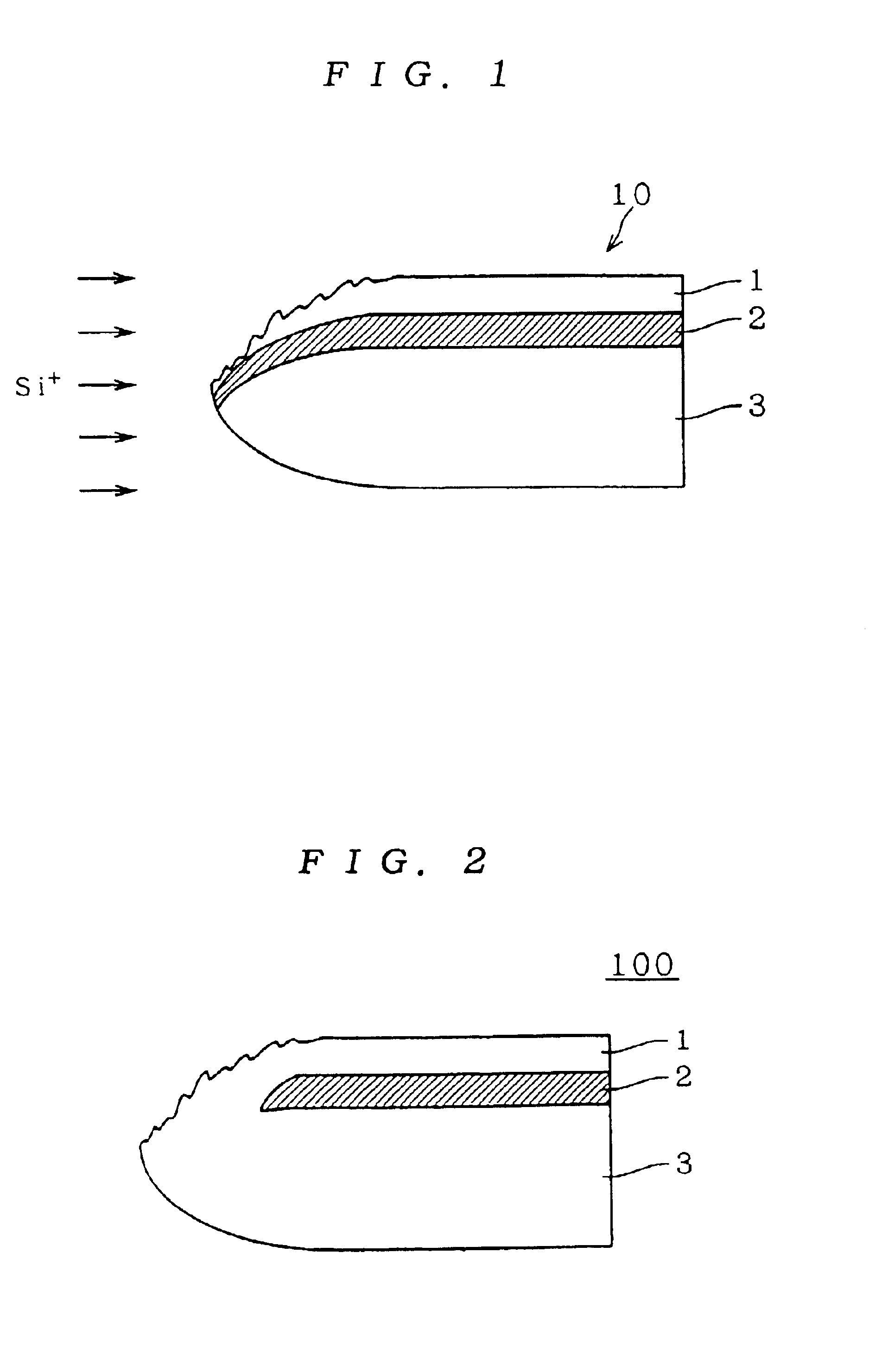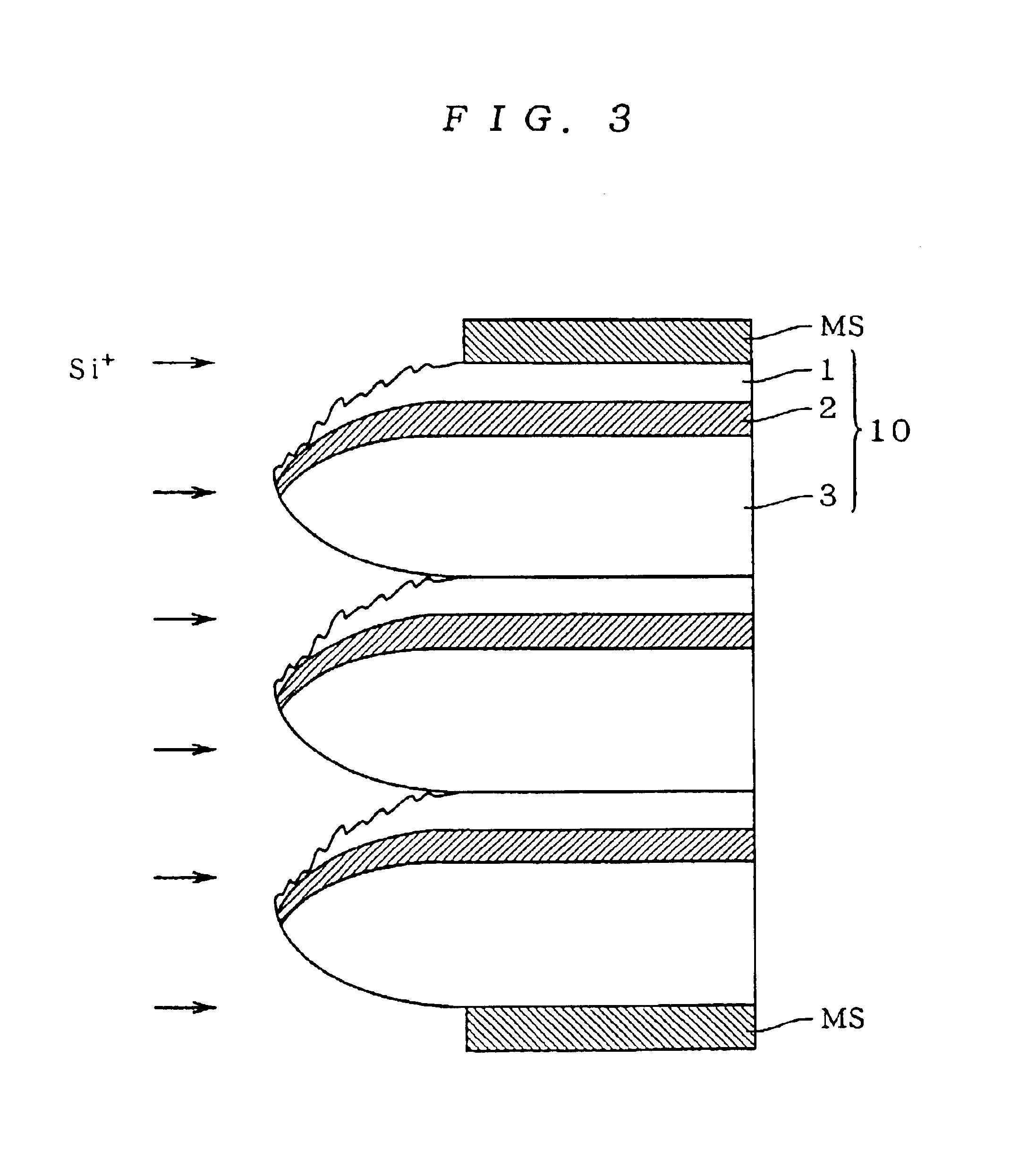Semiconductor substrate with stacked oxide and SOI layers with a molten or epitaxial layer formed on an edge of the stacked layers
- Summary
- Abstract
- Description
- Claims
- Application Information
AI Technical Summary
Benefits of technology
Problems solved by technology
Method used
Image
Examples
Embodiment Construction
A. First Preferred Embodiment
[0088]A semiconductor substrate processing method and a semiconductor substrate according to a first preferred embodiment of the present invention will now be described referring to FIG. 1 to FIG. 4. In the following description, a semiconductor substrate is referred to separately in its upper main surface (the side on which semiconductor elements are formed), center part thereof (including the active region in which semiconductor elements are actually formed), edge part including the peripheral part around the center part and the side, and lower main surface.
[0089]
[0090]FIG. 1 is a diagram showing a partial section of an SOI substrate 10 formed by an SIMOX (Separation by Implanted Oxygen) method. In the SIMOX method, an SOI structure is obtained by implanting oxygen ions to doses of 1×1018 to 2×1018 / cm2 at 150 to 200 KeV and then annealing it at about 1300 to 1400° C. The SOI substrate 10 includes a buried oxide film 2 and a single-crystal silicon layer...
PUM
 Login to View More
Login to View More Abstract
Description
Claims
Application Information
 Login to View More
Login to View More - R&D
- Intellectual Property
- Life Sciences
- Materials
- Tech Scout
- Unparalleled Data Quality
- Higher Quality Content
- 60% Fewer Hallucinations
Browse by: Latest US Patents, China's latest patents, Technical Efficacy Thesaurus, Application Domain, Technology Topic, Popular Technical Reports.
© 2025 PatSnap. All rights reserved.Legal|Privacy policy|Modern Slavery Act Transparency Statement|Sitemap|About US| Contact US: help@patsnap.com



